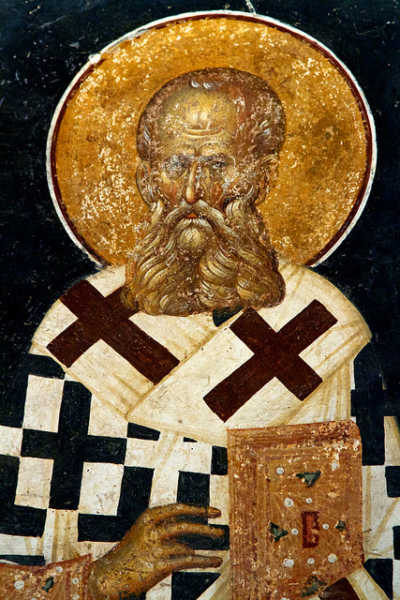We run our website the way we wished the whole internet worked: we provide high quality original content with no ads. We are funded solely by your direct support. Please consider supporting this project.

How the Church Fathers Read the OT
After the completion of the New Testament, the church fathers developed theology in their increasingly Gentile post-apostolic church in such a way that many of the distinctively Jewish features of the NT’s use of the OT diminished. However, this was not the case with regard to the Christocentric interpretation of the OT that was so central to how the NT writers interpreted the OT. As noted historian, Robert Wilken, has noted, the early church fathers didn’t consider the original meaning of OT passages to be altogether irrelevant, but they did consider it merely “preparatory” for the fuller meaning of passages that was unlocked when they were read in the light of Christ. The distinctly “Christian understanding” of Scripture was for them “oriented toward the living Christ revealed through the words of the Bible…”[1]
For these believers, writes Denis Farkasfalvy, “Jewish holy books function and are interpreted as documents of a Christ-centered salvation history with its full and true meaning apparent only in the light of the Church’s faith in Christ.”[2] Indeed, according to Claire McGinnis, “[n]ot only did the NT serve as the key to understanding the Old” for these fathers, but the uniform assumption of interpreters during this period was that “the books of the Old were about Christ.”[3] Following the precedent of the NT, these fathers understood Christ to be the fulfillment of fundamental OT motifs as well as of specific OT prophecies.
Following this precedent, these fathers relied on typological as well as allegorical interpretive strategies to discern Christ in the OT. It was by this means that Origen, Gregory of Nyssa, John Cassian and others were able to discern how violent portraits of God in the OT bore witness to Christ, as argued in The Crucifixion of the Warrior God.
By means of creative Christocentric interpretive strategies such as these, the Bible became for these interpreters “a vast field of interrelated words, all speaking about the same reality, the one God revealed in Christ,” as Wilken notes. The central goal of early Christian interpreters, he continues, was “to find Christ in surprising and unexpected places.” [4] And it was primarily by this means that the early Church was able to continue to embrace the OT as its own.
[1] R. L. Wilken, “Interpreting the Old Testament,” Isaiah: Interpreted by Early Christian and Medieval Commentators, trans. and ed. R. L. Wilken, A, R. Christman, and J. Hollerich; The Church’s Bible, xvii.
[2] Denis Farkasfalvy, Inspiration and Interpretation, 23.
[3] Claire McGinnis. “Stumbling over the Testaments: On Reading Patristic Exegesis and the Old Testament in Light of the New,” Journal of Theological Interpretation (April, 2010), 15-31.
[4] Wilken, “Interpreting the Old Testament,” xviii.
Photo credit: Nick in exsilio via Visual Hunt / CC BY-NC-SA
Category: General
Tags: Bible Interpretation, Church Fathers, Cruciform Theology
Related Reading

Sin-Bearing God
On the cross, God became our sin, as Paul wrote: “God made him who had no sin to be sin for us” (2 Cor 5:21). However, God didn’t begin to be a sin-bearing God when Jesus walked the earth and hung on the cross. Rather he became Incarnate and bore our sins on the cross…

Did Yahweh Crush His Son?
Though Isaiah was probably referring to the nation of Israel as Yahweh’s “suffering servant” when these words were penned, the NT authors as well as other early church fathers interpreted this servant to be a prophetic reference to Christ. Speaking proleptically, Isaiah declares that this suffering servant was “punished” and “stricken by God” (Isa 53:4,…

5 Differences Between The Kingdom of God and the Kingdom of the World
Image by matthijs rouw via Flickr The kingdom of God looks and acts like Jesus Christ, like Calvary, like God’s eternal, triune love. It consists of people graciously embracing others and sacrificing themselves in service to others. It consists of people trusting and employing “power under” rather than “power over,” even when they, like Jesus, suffer because…

Why Greg Can’t be Accused of Marcionism (Let’s Not Burn Him at the Stake Just Yet)
Kristin Brenemen via Compfight Richard Beck posted a blog today entitled It’s the Same God: On Marcionism, Creeds, Hermeneutics and War. You’re going to want to take the time to read through it in its entirety. Greg has been accused of Marcionism quite a lot as a result of the working out of his Cruciform…

History and Bible: Do They Align?
To begin, it is significant that when Jesus and the authors of the NT referred to their sacred writings as “God-breathed,” they were referring to the writings that had been handed down to them. So too, the text that the Church has always confessed to be “God-breathed” has been the canon she received. Never has…

Why Christ, not Scripture, is Our Ultimate Foundation
In a previous blog I argued that all our theological reflection must not only be Christ-centered, it must, most specifically, be cross-centered. I now want to begin to unpack some of the most important implications of adopting a cross-centered theological perspective. My ultimate goal is to show how a cross-centered theology is able to resolve the…
